Ever watched a refrigerator TVC and wished yours looked the same? A well-organised, colour-coordinated refrigerator is a dream, but seems like a daunting task. Well, what if I told you that a schedule and simple alterations can do the trick? Here’s a detailed guide.
1. Purge
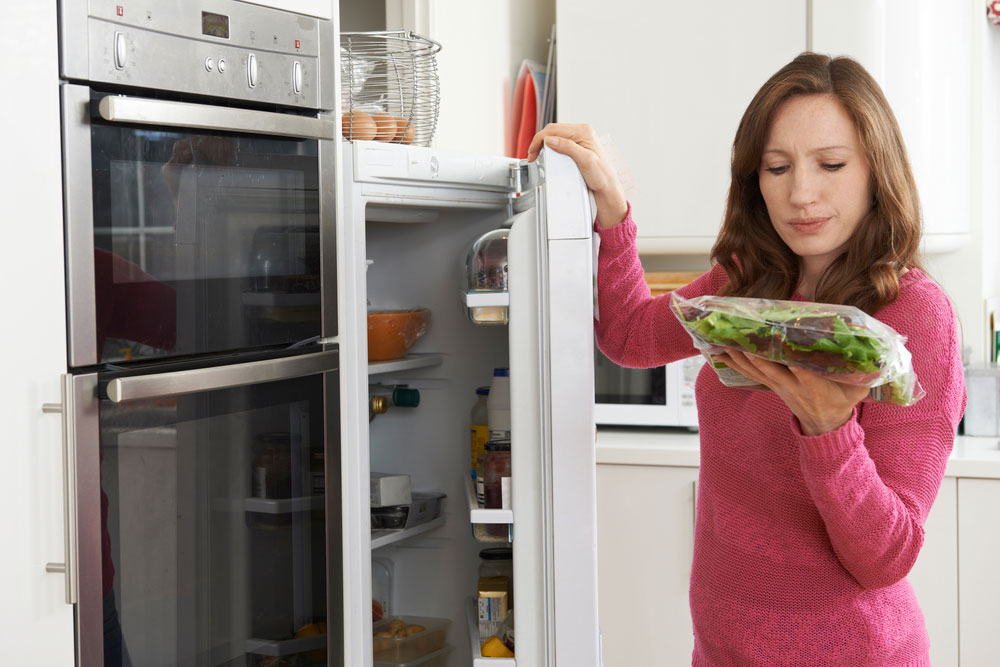
Image source: @shutterstock
Remove all contents from the refrigerator—compartments included. While doing so, check the expiration dates on all bottles, cans, and spreads. Finally, reach out and open those lost containers sitting in the far corner, and check if it still holds edible content (a sniff test here works wonders).
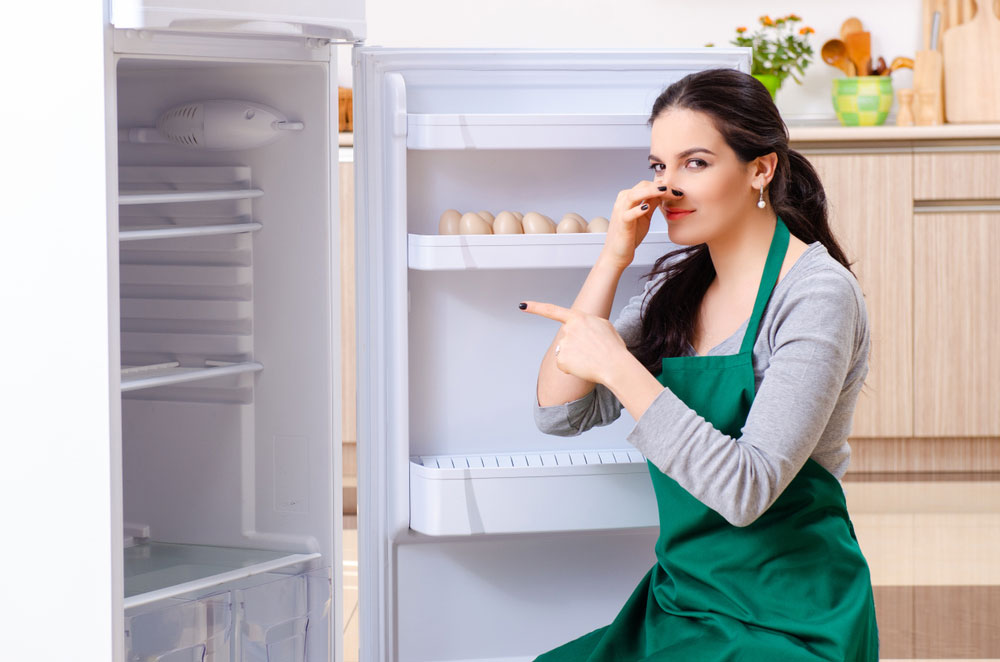
Image source: @shutterstock
Toss anything that is past its shelf life no matter the quantity. Remember, just because it is in the fridge, and doesn’t have green fuzz growing, doesn’t mean it hasn’t gone bad.
2. Scrub
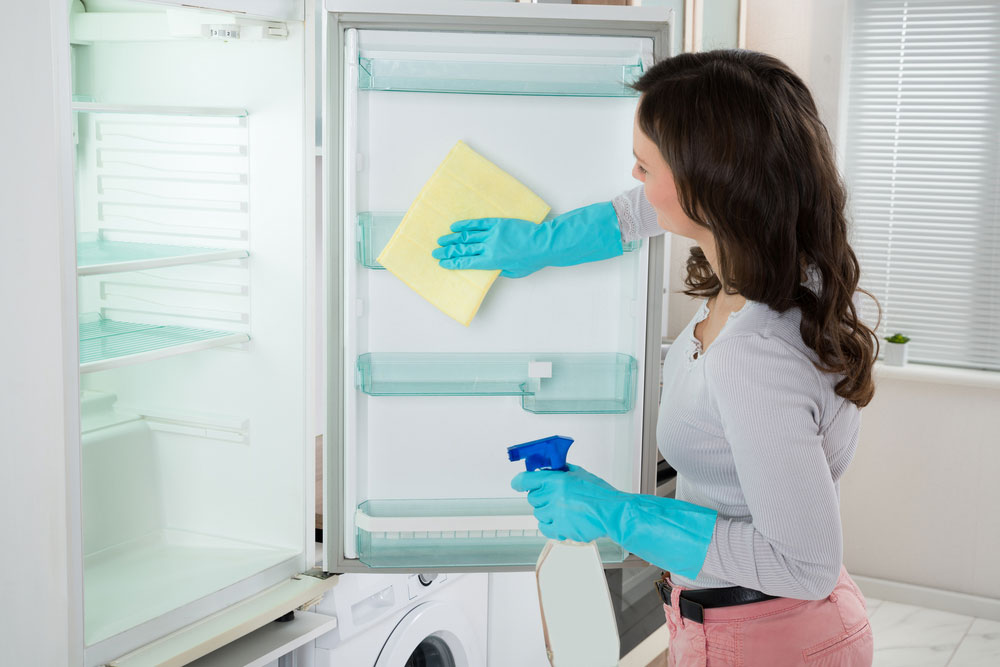
Image source: @shutterstock
Every Indian household has a fridge that holds more food than the permitted capacity, and we often miss the spills, stains and crumbs that are left over on the shelves and compartments. It’s time to give it a thorough cleanse, wipe down every corner until it is left spotless.
• Remember to thaw the freezer before you begin cleaning.
• Fill a spray bottle with a soft cleaning solution (detergent works well too), two tbsp baking soda and some hot water. Shake well and spray all over the interior surfaces, including the walls, non-removable shelves, shelf dividers, and the insides of the door. Leave it for three-five minutes, and wipe with a sponge or microfiber cloth.
• Lay down waterproof refrigerator mats on each shelf, it makes cleaning easier and also fights bacteria and odour.
• Scrubbing the exterior is just as important. Remove everything that is attached to the exterior – magnets, post-its, art-work, stickers, and faded photos. Throw away anything that’s old and tattered and holds no sentimental value. Clean using a damp cloth dipped in a mildly soapy solution.
• Lastly, install a refrigerator air freshener. For a super quick DIY solution, open a fresh box of baking soda and stick it on one of the shelves.
3. Categorise inventory
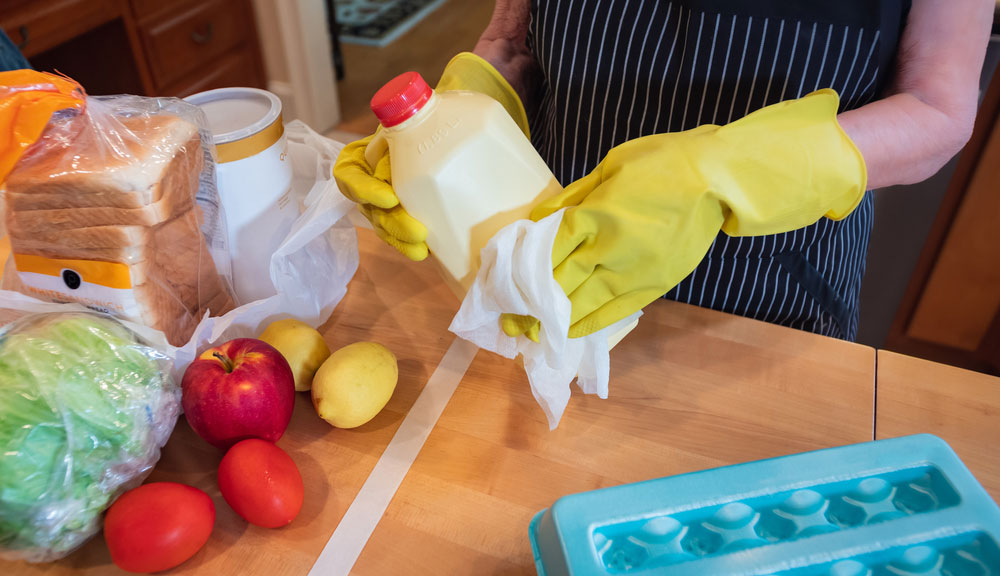
Image source: @shutterstock
Once the refrigerator is sparkling clean, it’s time to divert our attention to the remaining contents. Notice what is used regularly and what sits untouched in the fridge for weeks without anyone noticing; this helps in planning your grocery list and avoiding unnecessary purchases.
4. Organise
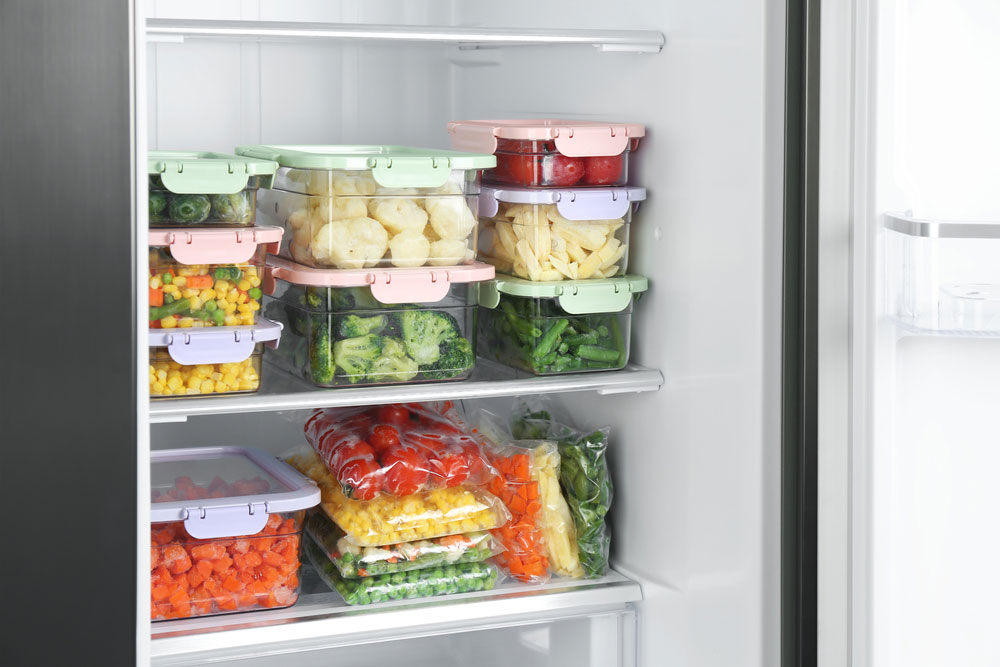
Image source: @shutterstock
We are all guilty of this, but it’s time we stop re-using cheap plastic take out containers. This practice is unhygienic and harmful to your health. It also makes your refrigerator look messy and unorganised.
• Buy or re-use transparent glass containers to store your left overs or meal preps, and use air tight eco-friendly containers or zip lock pouches to store vegetables, fruits, loose condiments, home-made sauces, dips, and spreads. They are easy to label and spot to avoid any wastage.
• Never store open containers and bottles – they get contaminated and are responsible for bad odour in the refrigerator. Stock silicone container covers in different shapes and sizes.
• After you’ve consumed canned food (or a part of it), don't dispose of the liquid or continue to store the remains in the same can. Transfer the contents to an airtight container; this will keep it from going stale
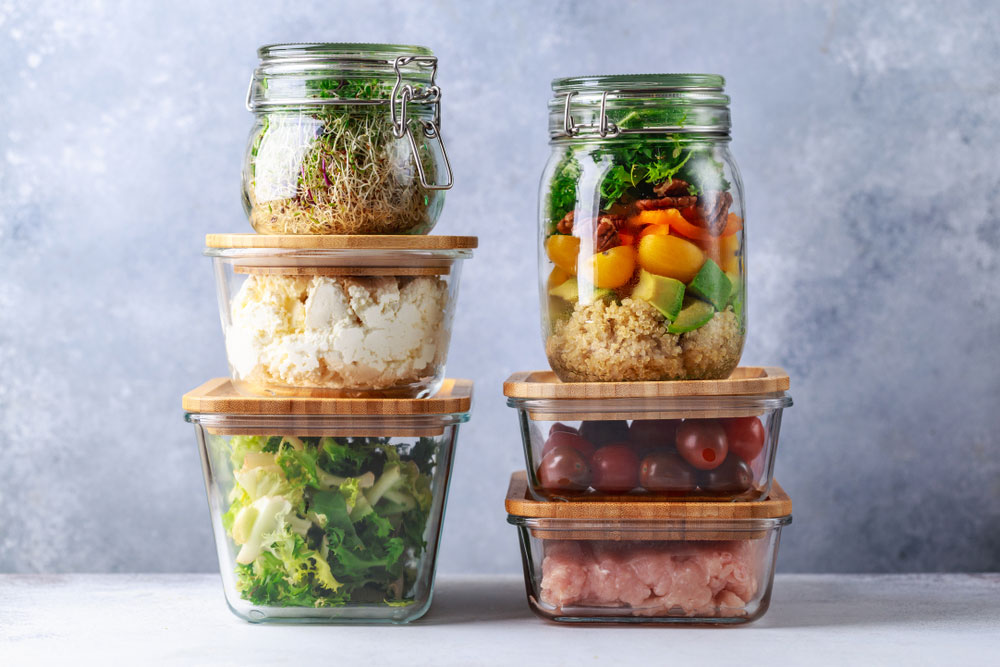
Image source: @shutterstock
• Invest in fridge bins in an assortment of shapes and sizes to store your loose food items.
• Install stackable bottle storage bins for when you are having a party, so that you have enough space to chill wine or colas.
• DIY magnetic bottom mini containers or tins work well during monsoon when you have to store pretty much everything in the fridge. Stick them to the insides of the door or top of the shelves. It saves you a lot of space.
5. Compartmentalise
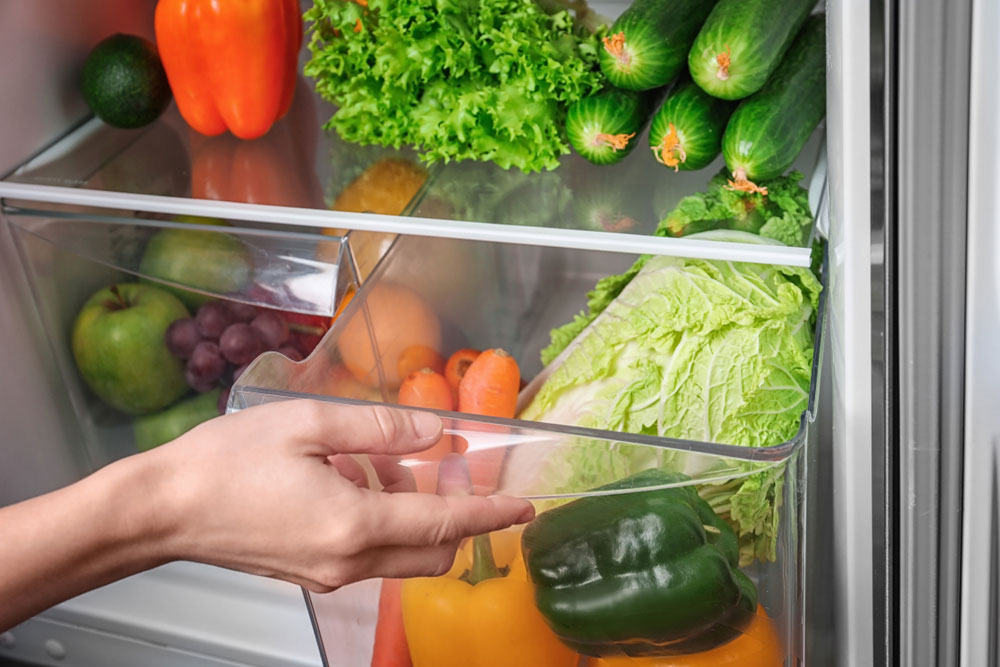
Image source: @shutterstock
• Always keep your vegetables and fruits in a compartment separate from your leftovers and canned goods. Vegetables should be stored in the crisper compartment (generally the compartment right at the bottom of the fridge) and not in direct contact with fruits; this will help retain their freshness longer.
i. Leafy greens like coriander, lettuce, and spinach stay fresh longer if they’re rinsed, wrapped and dried in a paper towel or newspaper, and refrigerated in a container or sealed zip lock pouch.
ii. Only store ripe tomatoes in the refrigerator.
iii. Vegetables like carrots, potatoes, pumpkin, lady finger, all types of gourds, cauliflower, broccoli, cabbage and celery should be washed, dried, diced or chopped as desired and stored in a zip lock bag or air tight container in the crisper of the fridge.
• Use one shelf dedicated to only left overs and meal preps.
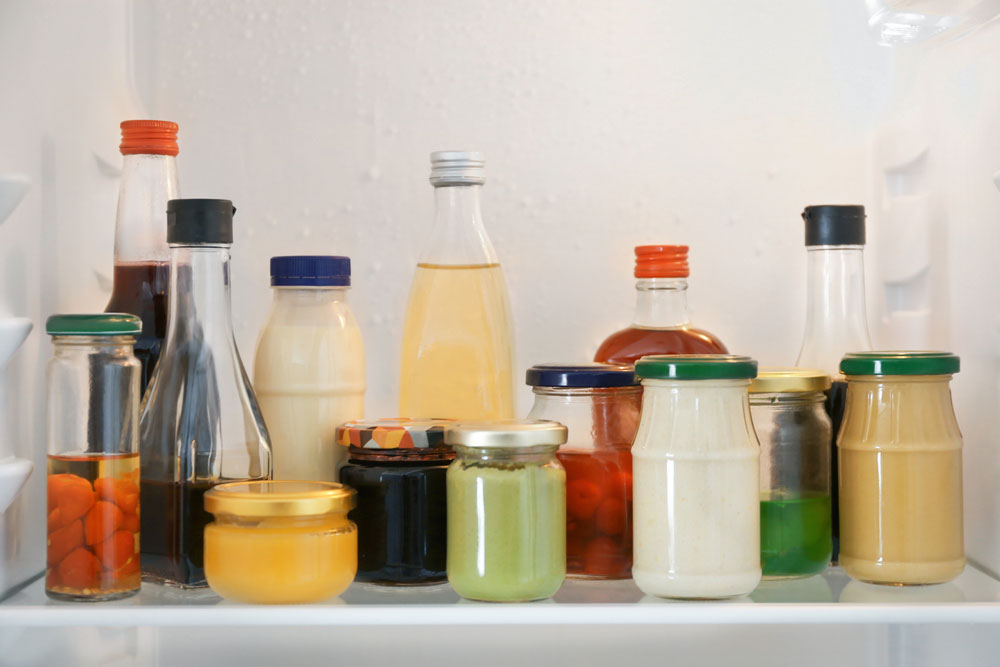
Image source: @shutterstock
• Keep all your condiments, spreads, ketchups, sauces, canned good, butter, cheeses in one compartment.
• Keep all foods that may spill at the bottom of the fridge so that the chances of them leaking and ruining other compartments are nil.
6. ‘Throw away’ day

Image source: @shutterstock
Often, refrigerators get messy and unmanageable because we keep food and leftovers and forget about them. Avoid this problem by checking up on the contents of your fridge once in 10 days.
• Label your containers and mark out the expiration date so you know exactly what's inside and more importantly, by when it must be consumed. Buy waterproof chalkboard labels for containers so that you don’t have to keep changing the labels after every wash.
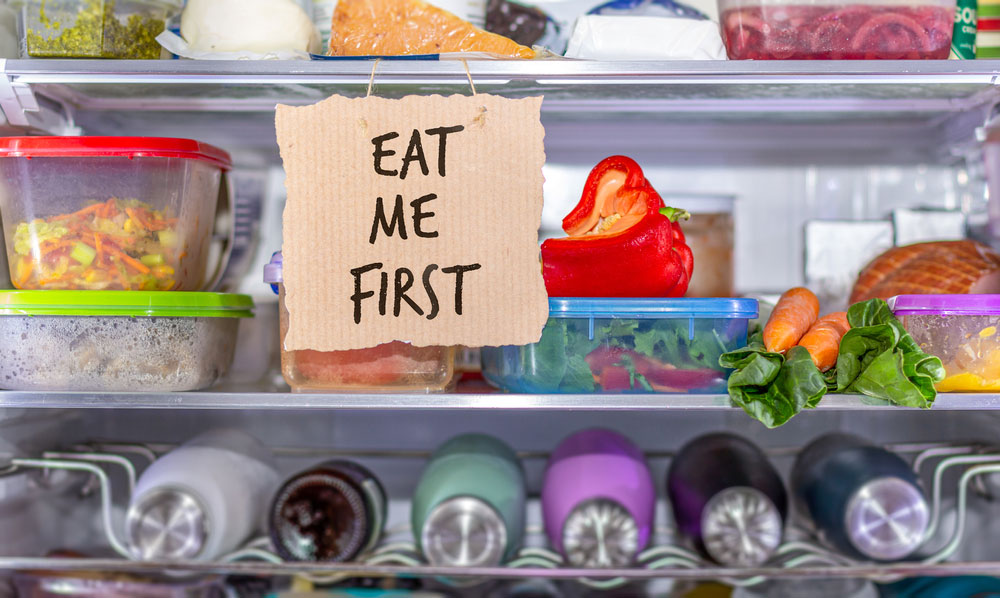
Image source: @shutterstock
• If you have almost empty bottles or containers hiding away, try using the contents within the next 2 days in your meal to avoid spoilage.
Pro tip: Ensure that home appliances run at a certain temperature to aid proper functioning (Preferably, check the instruction booklet that comes along with the appliance)
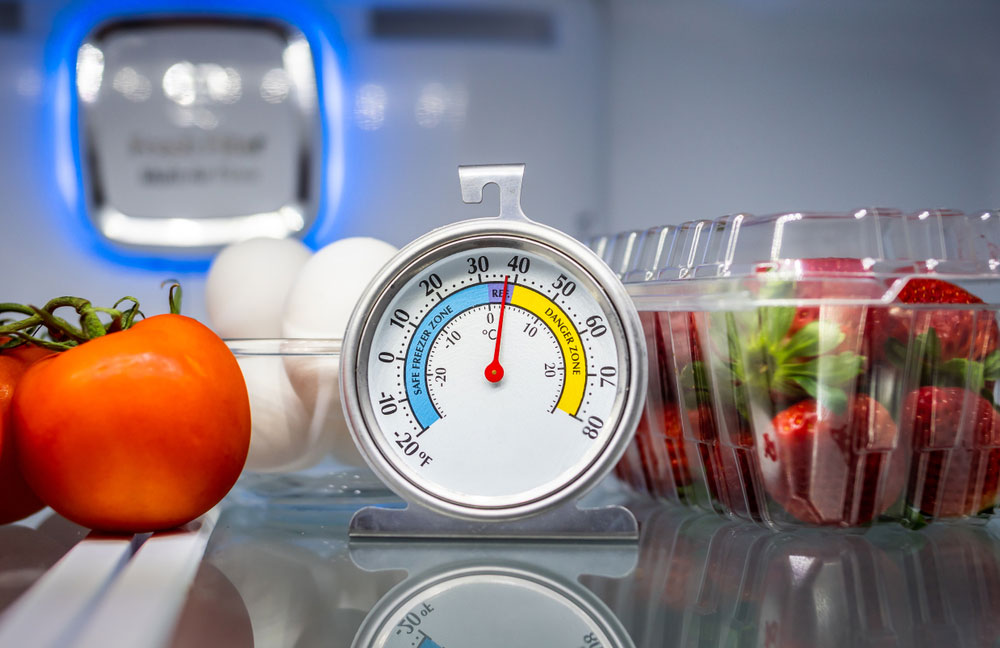
Image source: @shutterstock
• A refrigerator should stay around 2-3 ° C; never less than that.
• The freezer temperature should be at -18° C.
• Check temperatures periodically.